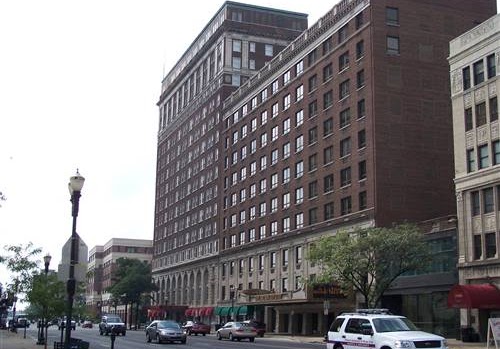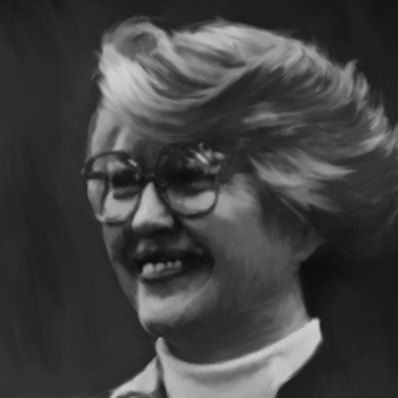About
Parents
In 1972, the J. Graham Brown School ushered in a new era of education in the Commonwealth of Kentucky, as the very first magnet school in the state. This milestone achievement was the result of a year's worth of diligent planning by an illustrious task force, working closely with the school's founding director, Martha Ellison.
With a progressive vision for integration, J. Graham Brown School was proudly the first voluntarily integrated school in Kentucky, with a student body composed of 50% Black and brown students and 37% disadvantaged students. The school's mission to provide quality education to all was made possible through generous grants from the J. Graham Brown Foundation, which ensured the school's success for years to come.
Initially, classes were held in the ornate ballrooms and meeting spaces of the historic Brown Hotel. The school served students from grades three through twelve, offering an enriched and challenging curriculum that fostered a love for learning. Over time, the school's popularity grew, and it became necessary to relocate. The Brown Educational Center became the new home before moving to its current location at the corner of 1st Street and Muhammad Ali Boulevard in the early 1980s.
According to Ms. Ellison, the downtown location was critical as it facilitated students' easy access to other educational facilities, such as the library and local businesses and cultural centers. The J. Graham Brown School has remained a beacon of academic excellence, firmly established in the bustling heart of downtown Louisville, KY, continuing to offer unparalleled educational opportunities to students from diverse backgrounds.
Under the visionary leadership of Martha Ellison, J. Graham Brown School opened its doors with a revolutionary approach to education in 1972. The school set forth unique and unorthodox academic and social goals that emphasized critical and creative thinking, challenged and extended student capacities, and stressed academic and personal growth. Ms. Ellison believed that gradually giving students the responsibility for selecting what they wanted to learn at a given time would help establish a learning environment that enabled, rather than stifled, student potential. Additionally, the school aimed to promote high expectations for academic success, encourage positive student interactions with peers and adults, and respect cultural diversity. These goals still inspire and guide our school today.
Martha Ellison, Brown's first principal
Through the years, J. Graham Brown School has evolved and grown alongside the changing landscape of public education. The school's rigorous liberal arts curriculum has prepared students for the challenges of college and global citizenship, while its small learning community has fostered a unique environment where all students are known by their Brown School family. Our less formal learning environment promotes collaboration across grade levels, where students can often be found working together in the classrooms and hallways of our historic building.
The school's success has been recognized throughout the region, and we remain a beacon of excellence in education. As we look to the future, we are committed to upholding our founding principles and continuing to prepare our students to be lifelong learners and leaders in an ever-changing world.
At the J. Graham Brown School, we pride ourselves on offering a unique educational experience that fosters personal growth, academic excellence, and self-regulation. Through our self-directed learning magnet theme, students are empowered to take charge of their academic, social, and emotional decisions, gradually assuming more responsibility as they progress through each grade. By the time our students graduate, they have not only acquired the knowledge and skills to succeed in college and beyond, but they have also developed the self-regulation skills necessary to thrive in any setting.
Our liberal arts curriculum is designed to help students make meaningful connections between their academic studies and the world around them. We believe that education is not just about acquiring knowledge, but about developing "reasoned minds and educated hearts" that are equipped to make a positive impact on society. At the J. Graham Brown School, we strive to create a learning environment that nurtures confidence and trust, allowing each student to reach their full potential.


In the spring of 2016, I was recognized as Today's Woman Most Admired Woman in Education. At the reception I was invited to make a speech about the woman that I most admired. The woman that I most admire is Martha Ellison, because her vision continues to guide my work leading our school. Below are the words that I shared that day.
This week completes my very first year as principal of the J. Graham Brown School. A year ago when I started my journey, the Brown School did not have a formal vision statement. That’s not to say that our school wasn’t founded with a vision in mind; actually, the ideals of the school were approved by the Louisville Board of Education eleven months prior to the school actually opening. During those eleven months, our founder was charged with purposefully developing the school’s mission, goals, and program. That’s one reason why the Brown School is still so successful today, and continues to rank in the top 1% of schools in the Commonwealth of Kentucky, because our program was strategically planned. So, in an effort to develop a vision statement that honored our legacy and founding purpose, but would enable us to continue to evolve, we dove into our archives to study the thoughts and aims of our founder Martha Ellison.
I’m going to start this evening by sharing with you a gem that I found in a Brown School yearbook from 1984. In that yearbook, Principal and Founder Martha Ellison wrote:
"In November 1971, I sat down with a vision, and wrote the ‘Working Papers’ for the J. Graham Brown School which was to open one year later in August, 1972. The Working Papers spelled out my dream of the ideal school. They were approved by a distinguished Task Force and by the Louisville Board of Education, and the school became a reality eleven months later.
"Inevitably, the ideals in the Working Papers were tempered by the reality of 450 unknown students, none of whom had participated in the preparation of the working papers.
"Now in the eleventh year (the twelfth for me), some of the ideals in the working papers are still among our primary thrusts. Others have gone the way of unrealizable goals."
Martha continued:
"Everything worthwhile begins with a vision. Through the years, and the many changes society has undergone since 1971, we have tried to deal realistically with the changing social fabric and with the changing needs of young persons. But the important part of the vision has remained unchanged; that we would provide an identifiable alternative to the neighborhood elementary school or to the regular middle or high school . . . a place where students could identify a difference in the relationships they could have with adults, in the degree of personal responsibility placed upon them, and in the general tone or tenor of the school as a more informal, less authoritarian institution. In this, we think we have succeeded. The number of students who elect to come back year after year, the number of students on our waiting list, the success of those students who have chosen to complete their public school education with us . . . all of these attest to the need for, and the success of, the school we envisioned those many years ago."
Martha concluded with this:
"A dogged adherence to an ideal that does not meet the needs of a changing society is tunnel-visioned, short-sighted, and ill met. It is my hope, and my vision, that the Brown School will continue to hold fast to the “differences that matter” while being sensitive to the shifting changing needs of the young people it attempts to serve in a constantly changing society."
I personally could read that passage now, in 2016, and replace “eleventh year” with “forty-forth year”, and those words would still ring true.
Even though I never had the honor to meet Martha Ellison before she passed away, she is no doubt the woman that I most admire. Remembering Martha’s legacy is crucial to our school because she recognized that the school’s vision needed to shift in response to the changing needs of young people and the needs of society, but it still needed to hold fast to “the differences that matter”. Those differences that she identified in that 1984 yearbook are:
Students can identify a difference in the relationships they could have with adults
More personal responsibility placed upon students, and
The general tone of the school is more informal.
The Brown School was Martha’s brainchild. After the school’s birth in 1972, she continued to stress these values as the school started to evolve and grow. In a 1984 school newspaper, Martha wrote, “As the school has evolved year by year, we have responded (we hope intelligently and sensitively) to the dramatic societal changes around us. . . . In our growing up, we have consciously and deliberately sought to delineate and hold fast to those values that are central to the qualities of the reasoned mind and the educated heart as we see them.” Furthermore, Martha contended “We do not claim to be better than any other school, but our informal, less authoritarian, open environment, combined with the degrees of emphasis on the arts, diversity and the community, combine to create a visible, observable difference . . . .”
Throughout her tenure, Martha’s vision was built upon leveraging those “differences that matter” to create high academic engagement and performance for Brown School students, and she invited the public to compare Brown School to other schools. In a 1980 editorial published in the Courier-Journal, Martha wrote, “We are, above all, a school with an academic thrust. At the heart of all our efforts is the teaching of basic skills. Our students’ scores on standardized achievement tests compare more favorably with the scores of students in other schools. However, we go beyond the usual definition to determine what is basic for today’s world. In addition to strong emphasis on reading, writing, speaking, math, science, and social studies, the Brown places emphasis on critical and divergent thinking, problem solving, decision making and the social skills of persuasion and conciliation. We believe all of these are essential to the effective functioning as a productive citizen in today’s world.” In 2016, we refer to these skills as 21st Century Skills, but Martha envisioned a focus on these skills as early as 1971. Furthermore, Martha contended, “We have never claimed to be ‘right’ for all students. We offer a less-authoritarian, less structured, more informal learning environment. Not one of these adjectives is synonymous with ‘laissez-faire . . . . A less-structured, less-formal, less authoritarian environment is right for many students.”
Martha’s vision is still alive and well today, after 44 years at the J. Graham Brown School. Not only do we hold fast to the differences that matter, but we continue to forge students who have “reasoned minds and educated hearts.” It is for those reasons that I deeply admire the founder of the Brown School, Martha Ellison.